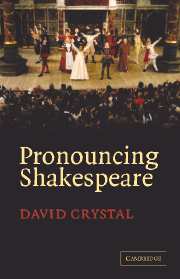Prologue by Tim Carroll
Published online by Cambridge University Press: 22 September 2009
Summary
Almost everything about this project was last minute. The decision to go ahead, all decisions about how to go ahead, even the appointment of a dialect coach – they all happened long after they should have done, if we were to do the thing properly. The reasons for this are boringly easy to imagine (money, scheduling problems, my own lack of organization); what is not so easy to explain is why it ended up working so well.
Over the last few years that I have worked at the Globe, I have spent a lot of time thinking about the nature of Shakespeare's language. I have always been very interested in what, if anything, Shakespeare's use of verse implies about the way the plays should be spoken. In particular, I have often noticed that an actor can create quite a pleasing effect by picking out those phrases (not so rare) which are still in use today and speaking them in as modern and ‘street’ a way as possible – ‘What do you mean?’ ‘How do I look?’. I have often felt that this short-term success came at a long-term cost: that it is a bit like performing a play in French, except that every time you come across a word like association that is the same as the English word, you pronounce it in English. This might help understanding fractionally, but it would destroy any chance of our believing we are listening to a language that anyone ever spoke.
- Type
- Chapter
- Information
- Pronouncing ShakespeareThe Globe Experiment, pp. xv - xviiiPublisher: Cambridge University PressPrint publication year: 2005



